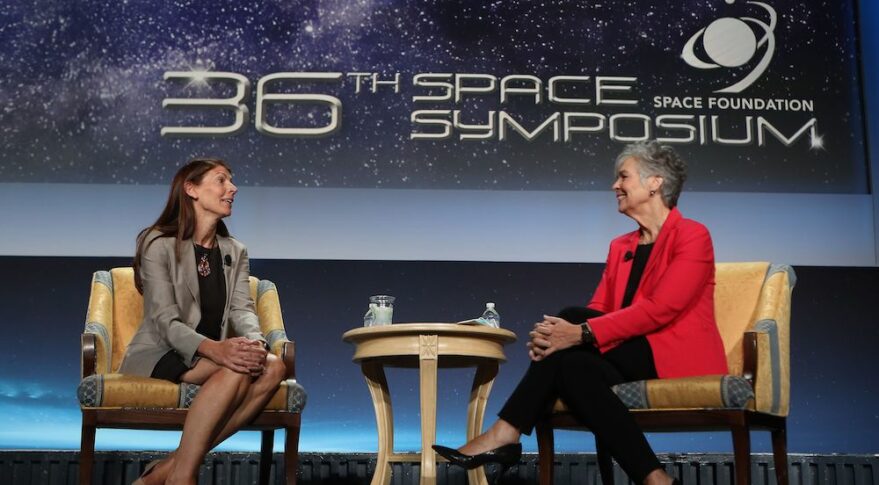
Accelerated digital transformations on Earth are a boost for deep space missions (Image Credit: SNN)

COLORADO SPRINGS — Efforts to digitize spacecraft manufacturing processes to support remote workers during the pandemic are also creating operational advantages for deep space missions, according to a Lockheed Martin executive.
Lisa Callahan, Lockheed Martin Space’s vice president and general manager of commercial civil space, said during an Aug. 24 Space Symposium session that COVID-19 prompted it to accelerate a “huge digital transformation road map” that was already in place to improve manufacturing workflows.
As the pandemic worsened in early 2020, Callahan said Lockheed introduced more online collaboration tools so that employees could work on spacecraft designs remotely to help shrink COVID-19 exposure rates.
“That allows us to get together through Zoom and other technologies to be able to do peer reviews of some of those designs online,” she said.
For Orion, the spaceship Lockheed is developing to take astronauts to the Moon, Mars and other deep space missions, Callahan said the company created a “digital twin” that engineers can use to review and test systems through simulations, before ordering parts.
Technicians can also access this digital representation with augmented reality glasses, enabling them to quickly measure and identify parts, where to place them and better manage workflows.
In the past they would have to spend time referring to manuals or computer screens, Callahan said, adding it would sometimes take a week for what can now be done in hours.
Operationally, these digital twins can assist ground-based teams, enabling them to quickly diagnose and solve issues on spacecraft that are out of reach of real-time communications.
This will be “critically important” for missions to Mars that have to manage significant communication delays, she added.
– Advertisement –








